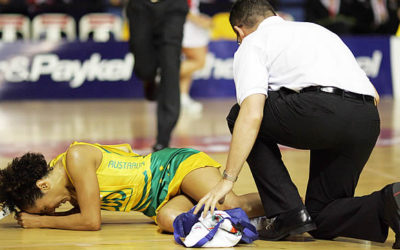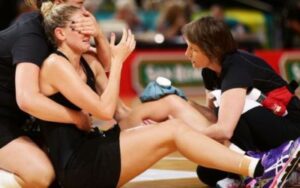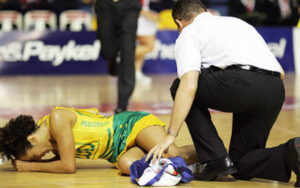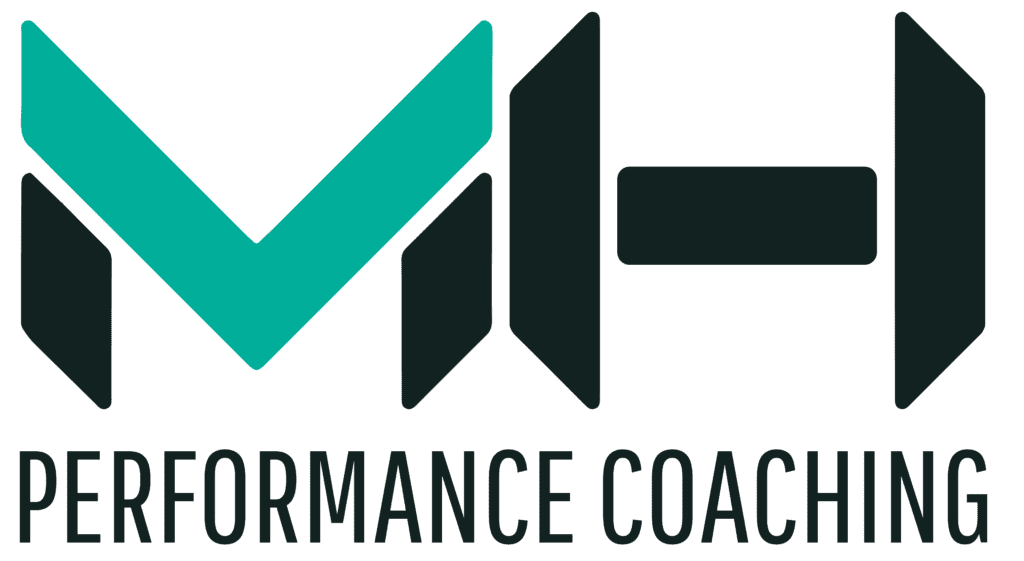As mentioned in part 1 of this article series, numerous factors need to be considered about how prone females are to injury, in particular knee injury to the ACL. This article will expand on the hormonal factors impacting female athletes’ risk of injury about the young female netball athlete.
Maturation displays the highest incidence of sport-related injuries in female athletes. Adolescent females playing sports that involve cutting, pivoting and jumping, such as netball are 4 – 6 times more likely to sustain an ACL injury compared to adolescent boys playing the same sports (1). Females display a plateau or decline in motor performance and strength during adolescence following puberty (6, 7, 8). The discrepancies in strength between males and females post puberty are explained mostly by the effect of hormones on the muscles impacting muscular growth which is attributed to the large increase in strength seen in males rather than females (7, 9, 8).
There are significant differences in the hormonal status of females who sustain ACL injuries compared to those who do not (3). Large changes in female sex hormones throughout the phases of the menstrual cycle may be related to a heightened ACL injury risk in female athletes (2). Two hormonal factors impacting young female athletes are their levels of the hormones estrogen as well as testosterone and progesterone. Each of these hormones has different effects on the body and too much or too little can increase females’ risk of injury.
Table of Contents
ToggleEstrogen levels
The hormone estrogen is responsible for promoting the development and maintenance of female characteristics within the human body, particularly in females. Estrogen binds to receptors on the ACL and decreases collagen production, which impacts the laxity of the knee. Decreased laxity can decrease the ability of ligaments to absorb forces placed on them thus consequently heightening the risk of knee injury in females who produce more estrogen than males. Estrogen levels are heightened during adolescence and puberty, increasing the risk of injury.
During the menstrual cycle, increased levels of estrogen typically characterize the luteal phase (after ovulation). A higher level of estrogen means ACL risk is higher during this time and research has shown that the highest number of injuries in female athletes occur during this period (4). Estrogen levels are heightened during adolescence and puberty, increasing the risk of injury.
Estrogen negatively influences females’ knee strength and stability due to increased laxity and thus the ability to absorb forces, causing them to be more prone to injury.
Testosterone and progesterone levels
Athletes who have sustained an ACL injury exhibit lower levels of testosterone and progesterone compared to those who have not. The hormone testosterone is a naturally occurring steroid within the body important in strengthening and stabilizing the knee ligaments. Female athletes with lower levels of the hormones testosterone and progesterone are at a greater risk of ACL rupture.
Testosterone and progesterone levels within young female netball athletes can influence the risk of injury within young female netball athletes due to hormonal fluctuations that occur during puberty.
Compared to males, females have levels of hormones such as estrogen, testosterone and progesterone that affect ligaments such as the ACL’s laxity, strength and stability and increase knee injury risk in sports such as netball, involving high forces during decelerating and landing where strength and stability are vital. Hormone levels of young females play important roles in determining how prone females are to injury.
References
- Hewett TE, Myer GD, and Ford KR. Decrease in neuromuscular control about the knee with maturation in female athletes. The Journal of Bone and Joint Surgery 86-A: 1601-1608, 2004.
- Hewett TE, Zazulak BT, and Myer GD. Effects of the menstrual cycle on anterior cruciate ligament injury risk: a systematic review. The American Journal of Sports Medicine 35: 659-668, 2007.
- Stijak L, Kadija M, Djulejic V, Aksic M, Petronijevic N, Markovic B, Radonjic V, Bumbasirevic M, and Filipovic B. The influence of sex hormones on anterior cruciate ligament rupture: female study. Knee Surgery, Sports Traumatology, Arthroscopy 23: 2742-2749, 2015.
- Slauterbeck JR, Fuzie SF, Smith MP, Clark RJ, Xu K, Starch DW, and Hardy DM. The Menstrual Cycle, Sex Hormones, and Anterior Cruciate Ligament Injury. Journal of Athletic Training 37: 275-278, 2002.
- Hewett TE, Myer GD, and Ford KR. Anterior cruciate ligament injuries in female athletes: Part 1, mechanisms and risk factors. The American Journal of Sports Medicine 34: 299-311, 2006. Hewett TE, Myer GD, Ford KR, Heidt RS, Jr., Colosimo AJ, McLean SG, van den Bogert AJ, Paterno MV, and Succop P. Biomechanical measures of neuromuscular control and valgus loading of the knee predict anterior cruciate ligament injury risk in female athletes: a prospective study. The American Journal of Sports Medicine 33: 492-501, 2005.
- Branta C, Haubenstricker J, and Seefeldt V. Age changes in motor skills during childhood and adolescence. Exercise and Sport Sciences Reviews 12: 467-520, 1984.
- Llyod R, Faigenbaum A, Stone M, Oliver J, Jefferys I, Moody J, Brewer C, Pierce K, McCambridge T, Howard R, Herrington L, Hainline B, Micheli LJ, Jaques R, Kraemer WJ, McBride M, Best TM, Chu DA, Alvar B, and Myer GD. Position statement on youth resistance training: the 2014 international consensus. British Journal Sports Medicine 48: 498-505, 2013.
- Parker DF, Round JM, Sacco P, and Jones DA. A cross-sectional survey of upper and lower limb strength in boys and girls during childhood and adolescence. Annals of Human Biology 17: 199-211, 1990.
- Neu CM, Rauch F, Rittweger J, Manz F, and Schoenau E. Influence of puberty on muscle development at the forearm. American Journal of Physiology Endocrinology and Metabolism 283: E103-107, 2002.





